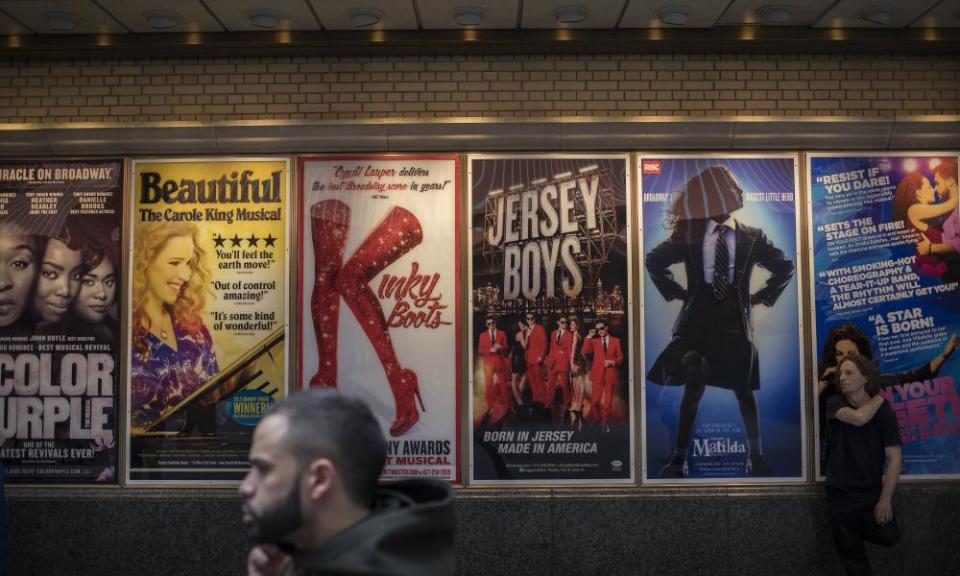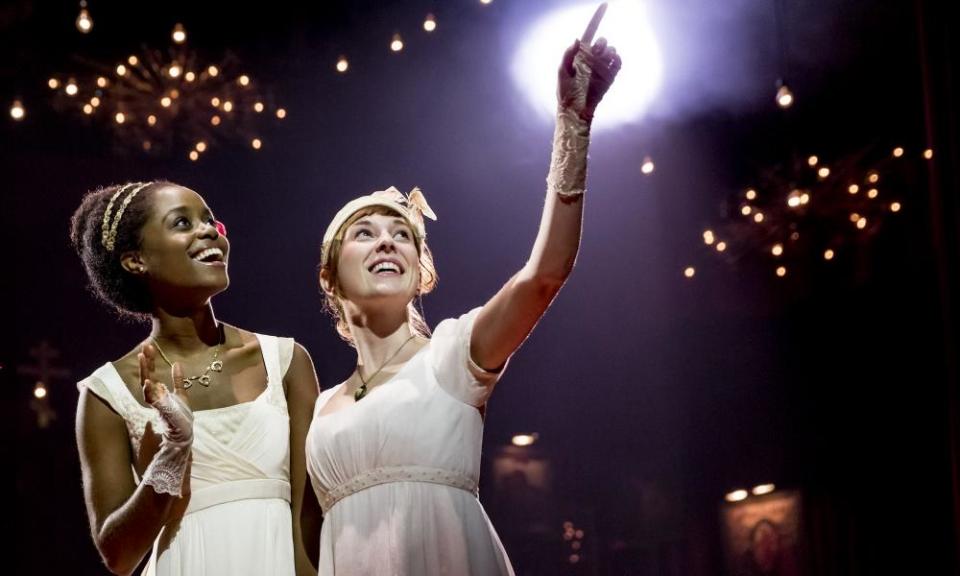Diversity on stage: who's afraid of color-blind casting?
The decision of Edward Albee’s estate to deny production rights over the casting choice of a black actor has reignited a debate over theater’s relationship with race

Last week, a casting director in Portland, Oregon, posted a Facebook message saying the Edward Albee estate had denied him the rights to Who’s Afraid of Virginia Woolf? upon learning that he intended to cast a black actor in the role of Nick.
The estate’s decision echoes similar actions by the estates of Samuel Beckett and Tennessee Williams to deny rights when a proposed cast member did not match the race or gender that the playwright had originally delineated. Even the rights holders of fluffier stuff, such as Grease, have made similar refusals.
At a time when, for example, the Broadway lineup offers a Hispanic founding father, a black Russian countess, racially diverse rogues in Chicago and the occasional black Phantom, are we moving toward an era in which the actions of the Albee estate will seem retrograde? Yes. But just like the subways rumbling under 42nd street, progress is pretty slow.
Part of the difficulty has to do with whether we perceive theater as a collaborative form in which a play is made new each time a director and actors put it on, or whether plays exist as blueprints for a single ideal staging that each production will realize to greater and lesser extent.
If it’s the latter, then the estate’s decision makes a lot of sense. Albee was a fervently precise writer and likely would not have conceded the frequent references to Nick’s blondness as negotiable. During his lifetime he denied rights to productions that wanted to alter the gender and even the age of the characters as he’d written them. (Then again, Albee was not wholly doctrinaire: he approved the casting of an African American woman as Martha in an Oregon Shakespeare festival production and allowed non-traditional casting in several other plays.)
But if it’s the former then perhaps we can hope for a theater that respects the integrity of both new and classic plays while also using them to reflect on urgent contemporary questions of race, gender and sexuality, as in Phyllida Lloyd’s all-female Shakespeare productions. And sometimes even these questions might yield to the excitement of thrilling actors taking on roles written for characters with dissimilar bodies, ethnicities and cultural identities. When Oscar Isaac plays Hamlet this summer, it’s difficult to imagine Shakespeare tsk-ing in his grave.
Yet for the most part, Broadway hasn’t taken this hint, despite the colossal success of Hamilton. Shows that adopt Hamilton’s hip-hop pastiche style will take years to build, but producers could have instantly embraced its color-conscious casting and its assurance that audiences will happily watch non-celebrity actors of color if they’re performing exhilarating work.

This hasn’t really been the case. Most plays were cast with actors who matched the ethnicity of their characters and even in parts in which no ethnicity was specified – as in supporting roles and chorus members – actors of color did not appear in any great numbers. (In Transit, Amélie and Natasha, Pierre & the Great Comet of 1812 are exceptions, though the first two have already closed.) Still, audiences could at least enjoy Condola Rashad as Nora’s Daughter in A Doll’s House, Part 2 or Barrett Doss in Groundhog Day or Corbin Bleu as a hoofer in Holiday Inn. Revivals of Miss Saigon and Jitney have also ensured strong work for actors of color.
Why haven’t more producers embraced non-traditional casting when it comes to lead roles? Well, restrictive estates might be part of the story, but a reluctance to challenge audience perspectives and the fact that most producers and directors are white men are likely more important factors.
Besides, sometimes race and gender are at the heart of the material and will resist meddling. It would be difficult, though by no means impossible, to fiddle with the racial makeup of Six Degrees of Separation, say, or even A Bronx Tale. Same goes for gender in most of this season’s new plays.
And there are times when traditional casting should probably be adhered to. Grease can survive the appearance of a Pink Dude among the ladies, but it’s more problematic to oppose Katori Hall’s stipulation, following a controversy, that The Mountaintop’s Martin Luther King Jr should always be played by an actor of color.
There’s a further argument, one raised most cogently by August Wilson, that non-traditional casting is simply a Band-Aid on a much more grievous wound – the lack of stories produced by and about people of color. It’s one thing to cast an Asian actor as Oedipus or women as Didi and Gogo, but another thing to commission and present works that speak to the experiences of minorities and women. But a Band-Aid is better than nothing, and a stack of them might promote healing. And even Wilson eventually allowed a company in Beijing to produce Fences.
But as the demographics of the US continue to alter, as more works fall out of copyright, as Hamilton and its ilk make a case for dynamic casting as a means of storytelling, theater will change too. Who knows what Nicks we’ll see then.

